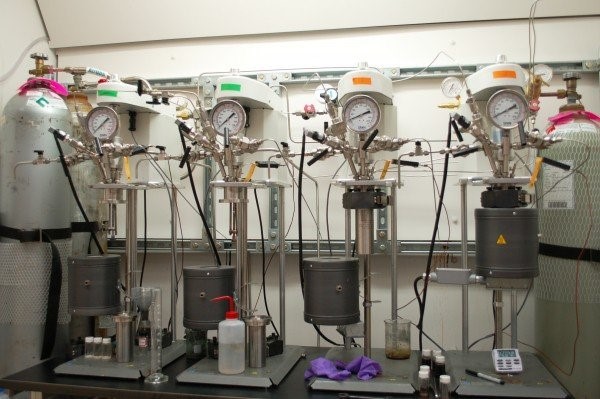For years large tire manufacturers have used isoprene derived from fossil fuels to produce synthetic rubber for use in tires to supplement use of natural rubber, which is sourced from latex-bearing trees. However, like with many of our planet's natural resources, supplies are limited, rendering the harvesting of natural rubber unsustainable.
Not to mention that conventional car tires are viewed as environmentally unfriendly because they're mostly made from fossil fuels.
However, researchers at the University of Minnesota have developed a new technology to produce automobile tires in a process that could shift the tire production industry toward using renewable resources.
The plants and trees that grace our backyards represent a biomass from which isoprene would be derived to make car tires identical in color, shape, performance and chemical makeup to existing car tires.
"Our team created a new chemical process to make isoprene, the key molecule in car tires, from natural products like trees, grasses, or corn," says Paul Dauenhauer, a UM associate professor who led the project assisted by researchers from the Center for Sustainable Polymers, a group funded by the National Science Foundation and headquartered at the university. "This research could have a major impact on the multi-billion dollar automobile tires industry."
Currently, isoprene is produced in a process called "cracking" in which molecules in petroleum that are similar to gasoline are broken apart using heat. The isoprene is then separated out of hundreds of products and purified. In the last step, the isoprene is reacted with itself into long chains to make a solid polymer, the major component in car tires.
Biomass-derived isoprene has been a major initiative of tire companies for the past decade. Most of their efforts focused on fermentation technology (similar to ethanol production).
However, renewable isoprene has proven a difficult molecule to generate from microbes, and efforts to make it by an entirely biological process have been unsuccessful.
A 3-STEP CHEMICAL PROCESS YIELDS RENEWABL ISOPRENE
Researchers from the CSP focused on a new process that begins with sugars derived from biomass including grasses, trees and corn. They found that a three-step process is optimized when it is "hybridized," meaning it combines biological fermentation using microbes with conventional catalytic refining in laboratory stirred-tank reactors, not unlike petroleum refining technology.
The first step of the chemical process is microbial fermentation of sugars, like glucose, derived from biomass to an intermediate, called itaconic acid. In the second step, itaconic acid is reacted with hydrogen to a chemical called methyl-THF (tetrahydrofuran). This step was optimized when the research team identified a unique metal-metal combination that served as a highly efficient catalyst.
The process technology breakthrough came in the third step to dehydrate methyl-THF to isoprene. Using a catalyst discovered at the university called P-SPP (Phosphoros Self-Pillared Pentasil), the team was able to achieve a catalytic efficiency as high as 90% with most of the catalytic product as isoprene, renewably sourced from biomass.
Dauenhauer was surprised by the performance of the new P-containing zeolite catalysts such as S-PPP. He attributes this new class of solid acid catalysts, which dramatically improved catalytic efficiency, as "the reason renewable isoprene is possible."
"Economically bio-sourced isoprene has the potential to expand domestic production of car tires by using renewable, readily available resources instead of fossil fuels," says Frank Bates, a polymer expert and University of Minnesota Regents Professor of Chemical Engineering and Materials Science. "This discovery could also impact many other technologically advanced rubber-based products."
Isoprene also is used in industrial applications such as in diapers, feminine hygiene products, surgical gloves, and other rubber-based products
The technology, patented by the University of Minnesota, is available for licensing through the university's Office of Technology Commercialization.
The study was published by the American Chemical Society's
ACS Catalysis.




